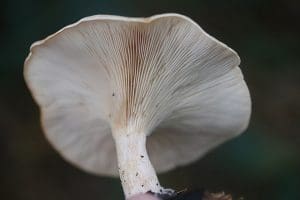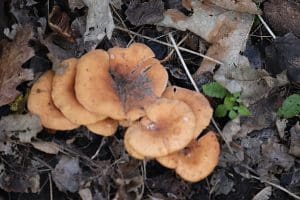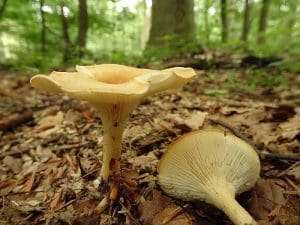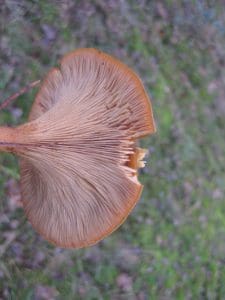Tawny Funnel / Summer / Autumn / Edible
The Tawny Funnel is a captivating mushroom, with its tawny-colored cap and delicate gills, is a common sight in woodlands, grassy areas, and gardens during the autumn months. Its distinctive funnel-shaped cap and earthy aroma make it a fascinating subject for mushroom enthusiasts and nature lovers alike.
The Tawny Funnel mushroom is often sought after by foragers for its edible qualities and unique flavor. In this exploration, we’ll uncover the intricate details of this charming mushroom, from its habitat and appearance to its culinary uses and ecological significance
Scientific Name
Paralepista flaccida
Common Names
Tawny Funnel, Tawny funnel cap
Family
Tricholomataceae
Habitat
They can be found in all kinds of woodlands, it is very common and it turns up nearly every autumn. Sometimes it is found growing on humus-rich soil but it mostly occurs in woodlands sometimes forming huge fairy rings.
Description
Although the common and scientific names suggest that this is a ‘funnel’, in fact it is now classed as one of the ‘blewits’.
Identifying Features of the Tawny Funnel:
Cap:
The cap grows up to 10 cm in diameter and is generally depressed in the centre or funnel-shaped. The colour can vary from a tawny brownish colour to more orange or reddish shades, the caps are smooth and matt. They tend to have a ‘low’ point making it look a little bit like a jug.
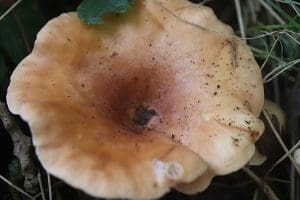
Stem:
The stem is 3 to 5 cm long, covered in tiny fibres and downy at the base. The are slightly paler in colour than the caps.
Gills:
When young the gills are off-white, but they become pale tawny when mature. The gills are deeply decurrent and crowded.
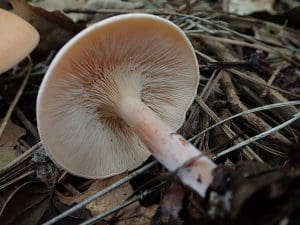
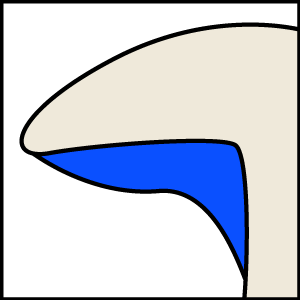
Smell:
Slightly fruity.
Spores:
Cream to White.
Uses for the Tawny Funnel
In food
Non toxic but a lot of guides list them as edible not worthwhile, which is a shame as they are so common and appear in huge numbers.
Known hazards
No known hazards.
Potential lookalikes of the Tawny Funnel
It could easily be confused with the Goblet Funnel (Clitocybe cyathiformis) The common funnel is generally larger, lacks the jug-like spout and has thicker flesh and is also edible.
Extra Notes
The scientific name Lepista is derived from Latin and means a wine pitcher or a goblet, and the species name flaccida simply means slack or flaccid in reference to their texture.
References:



